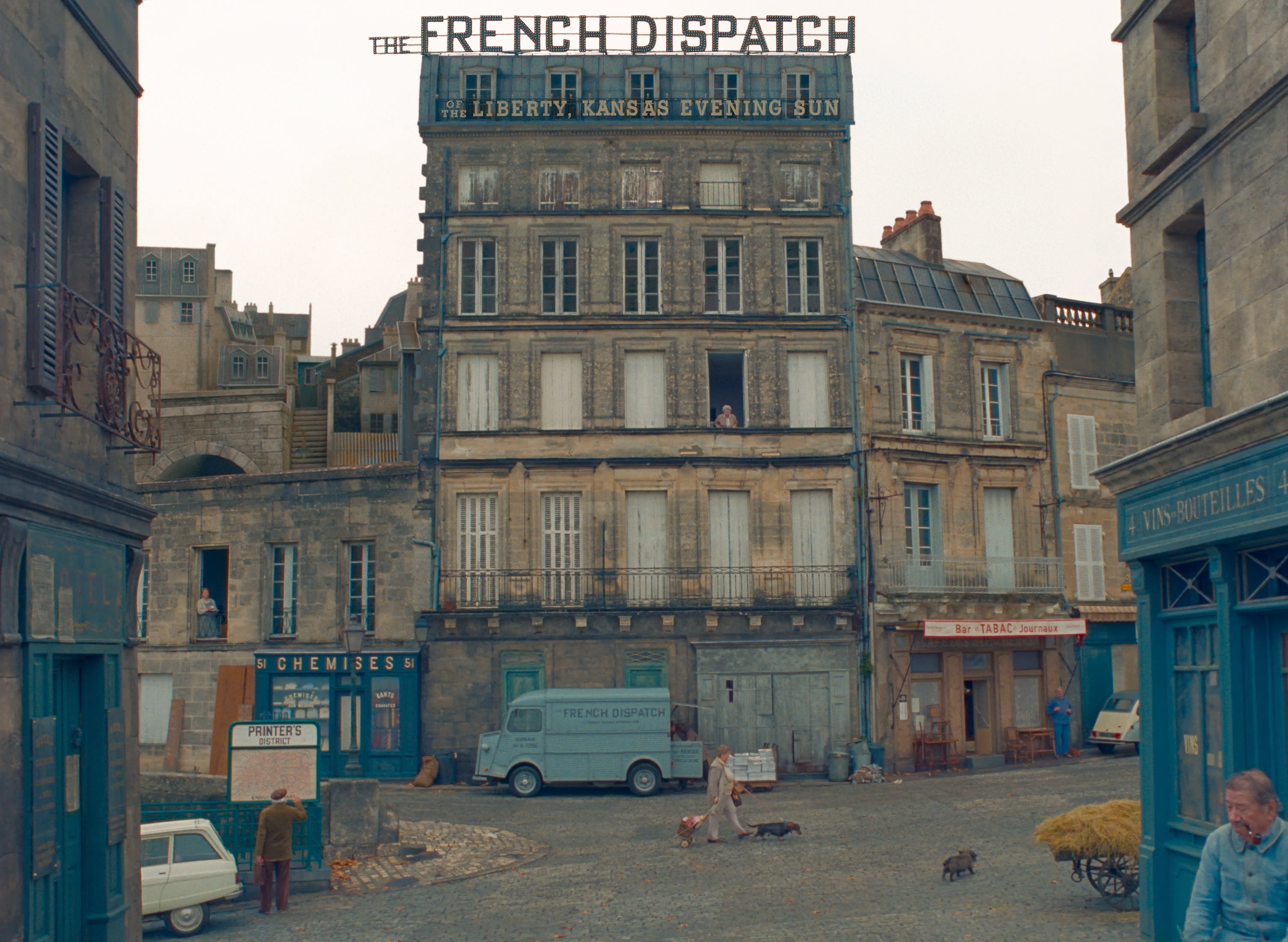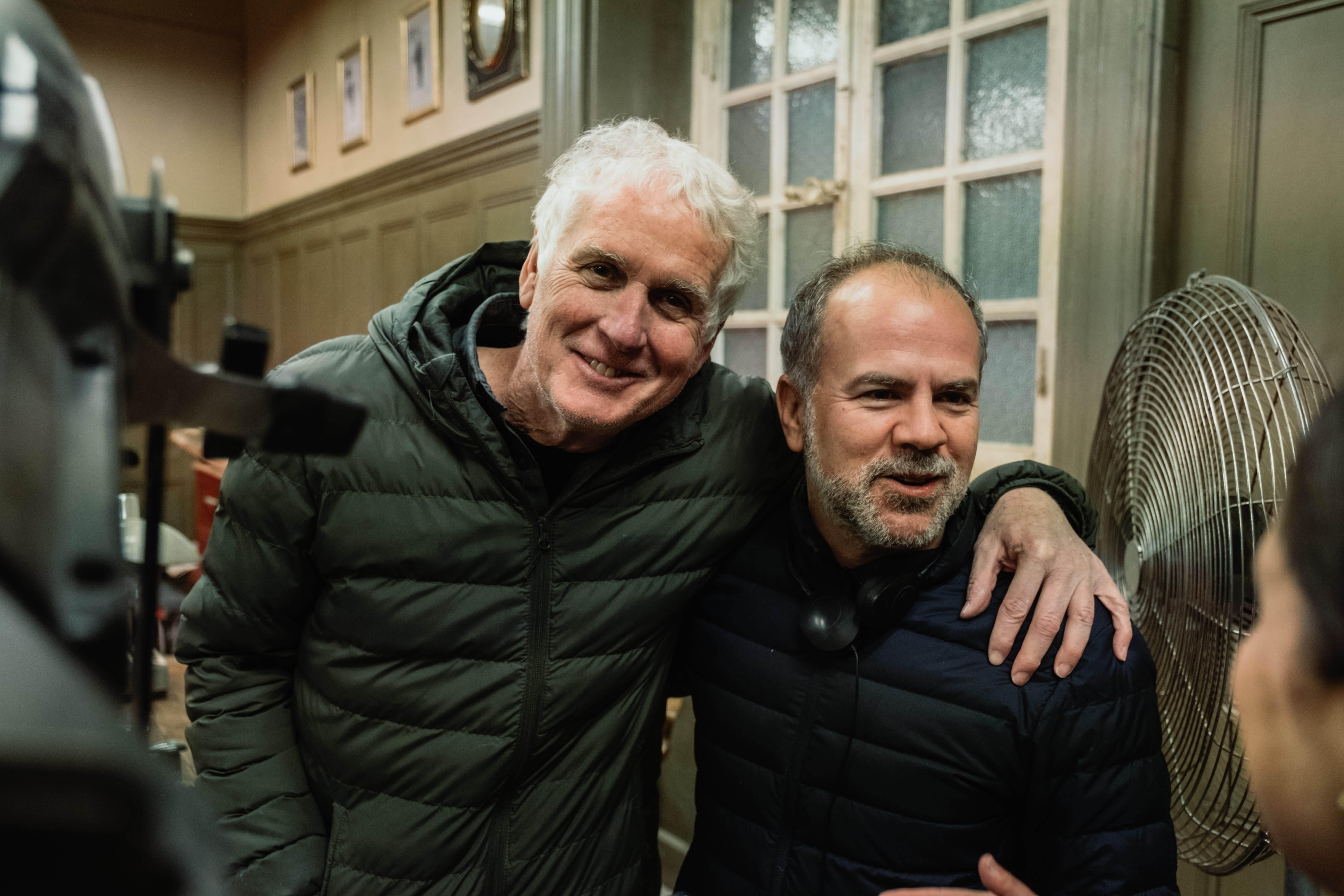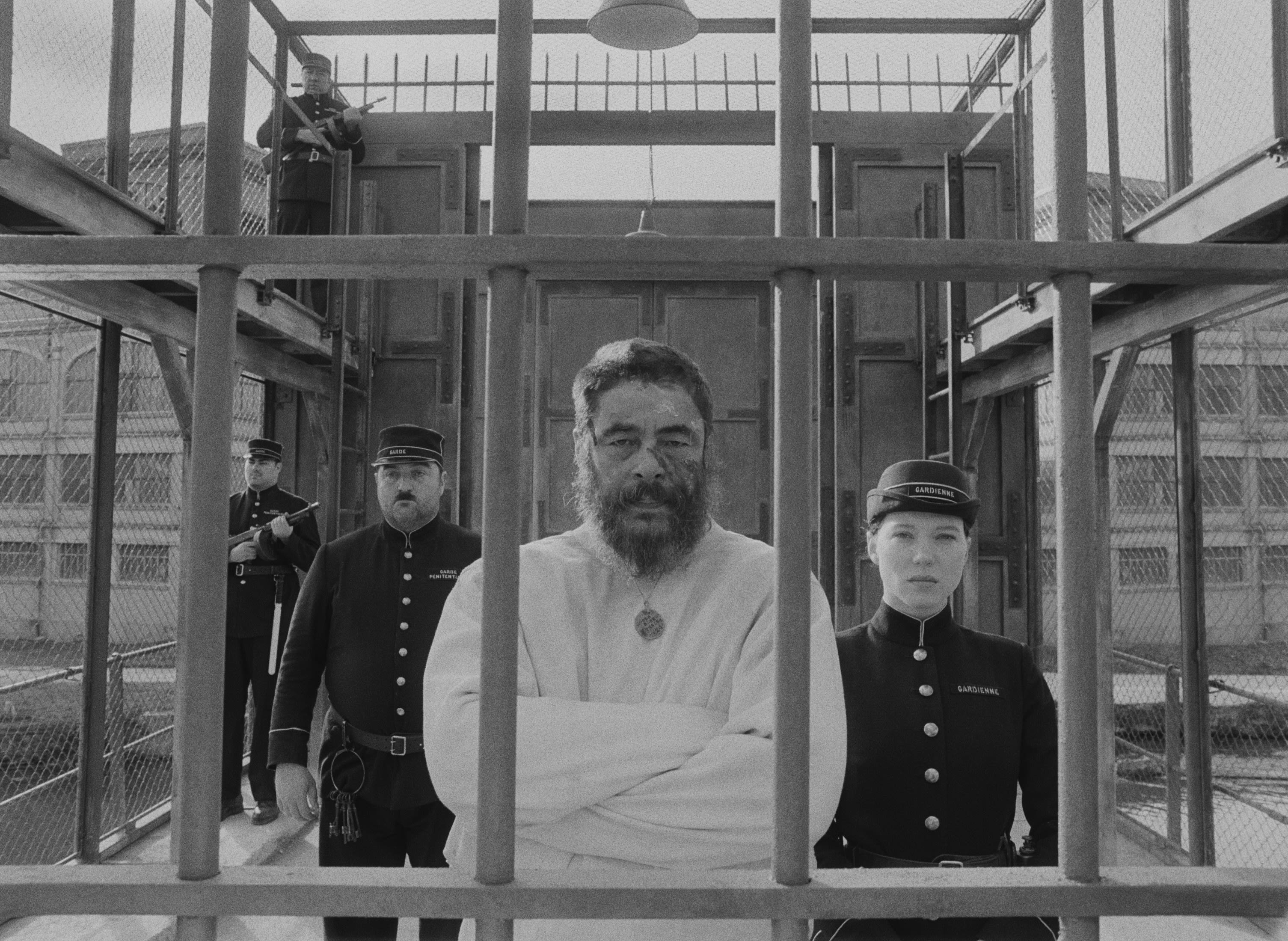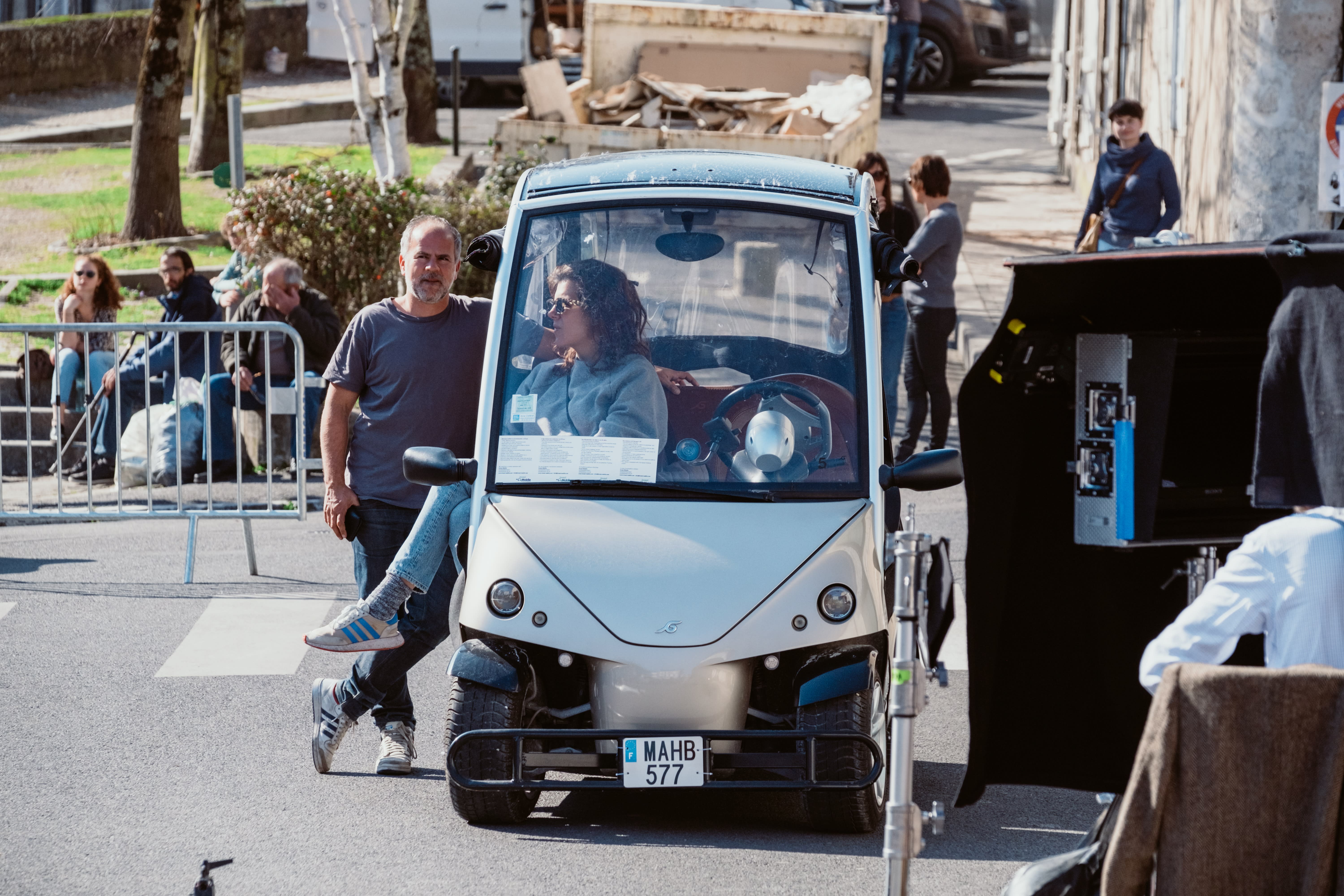
Film producer Jeremy Dawson (MFA 1993 Photography and Related Media) is best known for his many collaborations with writer-director Wes Anderson. Dawson has worked on each of the acclaimed writer-director’s movies since The Life Aquatic with Steve Zissou (2004), contributing everything from location scouting and prep to staffing and logistics work to devising special effects.
Anderson’s latest feature, The French Dispatch, has its U.S. premiere this Friday, October 22. The French Dispatch tells the story of (and the stories of) the last issue of a fictional France-based U.S. magazine, and its many stars include Benicio del Toro, Frances McDormand, Bill Murray, Tilda Swinton and Jeffrey Wright. Making the film was a unique puzzle—owing to its anthology format, varying styles and large cast—but for Dawson, finding solutions to knotty practical and creative challenges is his favorite part of the job.
“I get bored easily,” he says. As a producer, “you never run out of things to figure out.”
This past summer, Dawson called from Spain, where he was working on location for Anderson’s next project, to talk about how he fell into production work, what he likes about working with Anderson and the SVA connection to writer-director Darren Aronofksy’s debut, Pi (1998).

From left: Bill Murray, Wallace Wolodarsky and Jeffrey Wright in a scene from The French Dispatch.
“Film producer” seems like a job title with any number of possible definitions. How would you describe what you do?
It really is all over the place, and I think that’s the thing that appeals to me about it. Somebody comes to me with a project, and I start figuring out the how, why, what, where . . . and each one of those things brings up other questions that need to be answered. It’s a Rubik’s cube and you never run out of things to figure out. Ultimately what you’re trying to do is clear the runway for the director, so they’re not taken off their creative course by thinking something is too hard or expensive, and making the plane land softly.
How did you end up becoming a producer?
I was at SVA during the early years of Photoshop, and it sucked me in right away. The fact that you could do all these things with it kind of blew my mind. After graduating I was freelancing and doing this and that, but I also started teaching at SVA, because I’d been sort of ahead of the game with Photoshop.
While I was teaching I decided to take a Continuing Education animation class, and I needed a project for the class. Darren Aronofsky, who I’d gone to undergrad with, was making Pi, his first feature, and he’d brought me on board to do some graphics. And I said, “Maybe I could do the title sequence.” And I animated it in the SVA building on 23rd Street, using the Oxberry, and shot it frame by frame on 16mm film.
From there I jumped into the film thing. Other people started getting me to do titles, and then Darren was making Requiem for a Dream [2000] and asked me to help with some visual effects. Next thing you know, I was working in visual effects, mostly for special sequences, like for Julie Taymor on Frida [2002]. Next I did second-unit directing on [Aronofsky’s] The Fountain [2006], and then I started working with Wes on The Life Aquatic. He had these stop-motion sequences for the film, and even though I didn’t know anything about stop-motion, I was helping him figure it out.
When we finished, Wes said, “Now that you know about stop-motion, we’re doing this movie next that’s going to be all stop-motion, Fantastic Mr. Fox [2009], and we’re working on post-production for The Darjeeling Limited [2007], and maybe you can help with that.” And all of a sudden I was a producer, with no idea of how to be a producer.

Cinematographer Bob Yeoman (left) and producer and SVA alumnus Jeremy Dawson on the set of The French Dispatch.
The French Dispatch is your eighth collaboration with Wes Anderson. What was different about making this film, compared to the others?
Well, it’s an anthology of several different stories, so every week and a half we’d be shooting a new story. So many sets were being built and knocked down. It felt like the road was being built as we were driving down it—the builders were only a half-mile ahead and we kept gaining on them. But Wes has strategies that we tend to use to keep locations physically close together and we do a lot of preparation, which includes putting together an animated storyboard of the whole movie for all the departments to have.
We shot all of it in the same town in France, Angoulême, and I was there for four or five months—a month or two of prep and then eight to 10 weeks of shooting. Prep is everything from visiting locations, to figuring out where everyone’s going to stay to hiring a local line producer and local crew members. A great thing about French film crews is a lot of them are real film fans.
Wes is one of a small group of directors who still shoot on actual film, and for the black-and-white sequences we shot on real black-and-white film stock, which is hard to come by and you have to order in advance. We almost ran out at one point and had to adapt while we waited for more.

Benicio del Toro (center) and Léa Seydoux (right) in a scene from The French Dispatch.
Is there any one creative solution you’ve come up with that you’re particularly proud of?
I remember on Requiem for a Dream, the character played by Ellen Burstyn has a TV that’s on the fritz. She’s watching an infomercial and has to keep adjusting the reception. I helped to make the infomercial, and I also went to Radio Shack, bought some parts and made a little circuit that would mess up the picture on the TV. When they filmed the scene, I was lying under the TV and controlling the circuit.
But there are so many problems that you’re always trying to solve, and some are creative and some are practical. You know, “Would it be better to film this in Spain or in Portugal?” “Should this stunt be a digital effect or should we actually try to make this guy jump off a cliff with a parachute?” I’m working in Spain now, and I was just trying to figure out how to get someone in the country who’s having trouble getting in. This morning, I was rearranging a gymnasium that we’re going to be using as a location. And because I have that visual art background, I can still step in and help fix a design, or work with models or miniatures, or know the technical part of post-production.
The nice thing about working with Wes is that he likes to be fearless and try things. A lot of times in art school or in the industry, you’ll see people imitating their predecessors, or “playing adult.” My feeling is, if you really want to be great, you don’t emulate anyone—you just break the rules and go a little crazy with it.

Producer and SVA alumnus Jeremy Dawson (left) and co-producer Octavia Peissel on the set of The French Dispatch.
Having worked on both animated and live-action features, do you have a preference between the two?
Live-action is more fun to work on. I appreciate the animated ones more afterward. When you’re working on them, they just seem impossible and finishing them seems so insurmountable—they’re such weird, magical projects.
But on all of my projects, it’s less of an enjoyment during the process than it is a savoring of the accomplishment of getting it done. It’s like that feeling when you’re in school and you’ve stayed up late to finish what you’re working on so you can go to bed satisfied feeling that you’d gotten something done—that you’ve made a real thing that exists out there. When I look back, all the films I have done serve as markers of time in my life. ✺
This interview has been condensed and edited.
A version of this interview appears in the fall/winter 2021 Visual Arts Journal.

